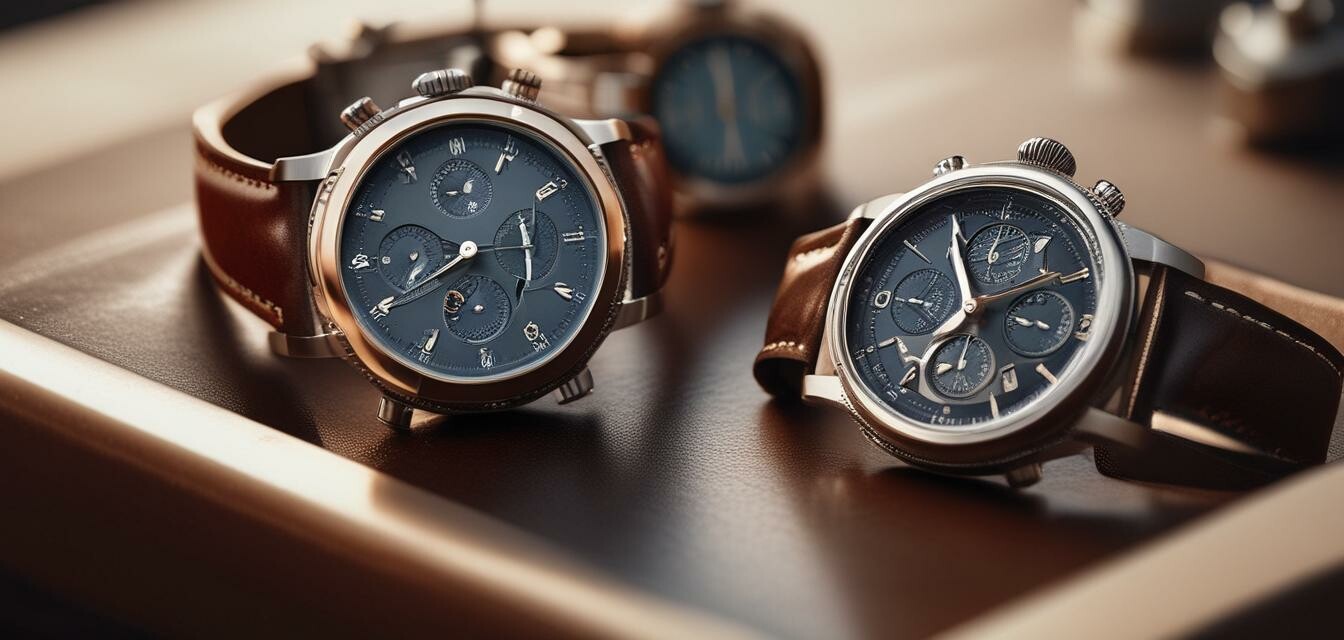
How to Identify High-Quality Watch Materials
Key Takeaways
- Understand different materials used in luxury watches.
- Recognize the significance of watch movements and craftsmanship.
- Learn how to assess the durability and comfort of watch straps.
- Familiarize yourself with luxury brands and their material standards.
When purchasing a luxury watch, the materials used can significantly influence both its appearance and performance. Understanding how to identify high-quality materials will help you make informed decisions and ensure that you're investing in a timepiece that not only looks great but will last for years to come. This guide will break down the key materials commonly found in men’s luxury watches, provide tips for assessment, and highlight some notable brands in the industry.
The importance of materials in luxury watches
The materials used in a luxury watch not only dictate its aesthetic appeal but also its durability, weight, and overall performance. Certain materials are synonymous with quality and are often used by prestigious brands. Below are the main categories of materials you'll often encounter:
| Material | Characteristics | Common Brands |
|---|---|---|
| Stainless Steel | Durable, resistant to corrosion, hypoallergenic. | Rolex, TAG Heuer, Omega |
| Gold | Luxury feel, weighty, valuable, typically 18k. | Cartier, Hublot, Raymond Weil |
| Titanium | Lightweight, corrosion-resistant, strong yet flexible. | Breitling, Hamilton, Longines |
| Leather | Comfortable, stylish, various textures available. | Mido, Movado, Raymond Weil |
| Sapphire Crystal | Scratch-resistant, enhances clarity, durable. | Omega, TAG Heuer, Rolex |
How to assess watch materials
When evaluating the materials of a luxury watch, consider the following tips to ensure you are making a quality purchase:
Tips for assessing watch materials
- Examine the weight: A luxury watch should feel substantial without being excessively heavy.
- Check for finish: Quality watches have smooth finishes with attention to detail. Look for even brushing or polishing.
- Beware of base metals: Avoid watches that are not fully marked with metal purity (like 18k for gold).
- Inspect the leather: Genuine leather should feel soft and supple, not stiff or plastic-like.
- Look for warranties: Quality brands typically offer warranties on their materials, indicating confidence in their craftsmanship.
Choosing the right watch for you
Choosing a luxury watch also involves understanding your own style and preference. Here are a few aspects to consider:
- Style: Formal, casual, sporty—what will you wear it with?
- Functionality: Are you looking for a simple timepiece or do you need additional features like a chronograph or a date function?
- Budget: Set a realistic budget based on the brands and materials you're interested in.
Popular luxury watch brands and their materials
Different brands have reputations for specific materials and craftsmanship. Here’s a quick overview of some well-known luxury watch brands and their highlights:
| Brand | Notable Materials Used | Known For |
|---|---|---|
| Breitling | Stainless Steel, Titanium | Aviation watches with high precision. |
| Cartier | Gold, Leather | Elegant designs with a touch of luxury. |
| Hamilton | Stainless Steel, Leather | American heritage and military-inspired designs. |
| Hublot | Gold, Ceramic | Innovative designs and unique materials. |
| Longines | Stainless Steel, Leather | Classic and elegant designs with Swiss craftsmanship. |
| Mido | Stainless Steel, Leather | Combining quality and affordability. |
| Movado | Stainless Steel, Gold | Iconic minimalist designs. |
| Omega | Stainless Steel, Gold, Titanium | Space-age technology with artistic elements. |
| Rado | Ceramic, Steel | Innovative materials for a scratch-resistant experience. |
| Raymond Weil | Gold, Stainless Steel | Fine Swiss craftsmanship with stylish designs. |
| Rolex | Gold, Stainless Steel, Platinum | Legendary durability and precision. |
| TAG Heuer | Stainless Steel, Leather | Sporty designs with precision engineering. |
Pros
- Understanding materials leads to better purchases.
- Higher quality often ensures longevity.
- Knowledge of various brands and materials enhances collection depth.
Cons
- Identifying quality materials can be overwhelming for beginners.
- Counterfeit luxury watches are a risk among buyers.
- Not all luxury brands consistently adhere to high-quality standards.
Conclusion
Identifying high-quality materials is crucial when buying a luxury watch. Armed with the right knowledge, you’re positioned to make informed choices about your investment. Whether you prefer the steadfast nature of stainless steel, the luxury of gold, or the lightweight nature of titanium, understanding these materials ensures you select a timepiece that meets your needs and stands the test of time. For more in-depth insights, check out our other articles in the Buying Guides category, where we cover everything from understanding movements to care for your watch.

